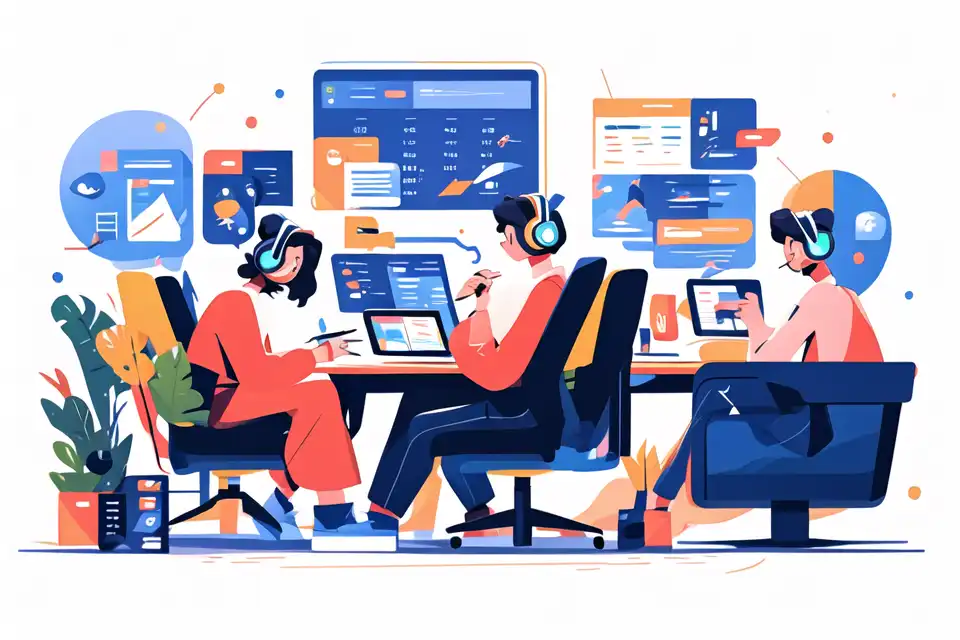Micro Goals for Design and User Experience Teams
Unlock the power of micro goals for design and user experience teams with our comprehensive guide. Explore key goal setting techniques and frameworks to drive success in your functional team with Lark's tailored solutions.
Try Lark for Free
The world of design and user experience is constantly evolving, with an increasing focus on creating seamless and intuitive digital products. The integration of micro goals offers a strategic approach that can elevate the effectiveness of design and UX teams, driving continuous improvement and alignment with overarching organizational goals.
Leverage Lark OKR for enhanced goal setting within your team.
Understanding micro goals
Micro goals represent specific, measurable, achievable, relevant, and time-bound objectives that act as stepping stones toward accomplishing larger initiatives. Within the context of design and user experience teams, they provide a clear roadmap for progress, fostering a sense of accomplishment and driving sustained momentum. By pinpointing attainable targets, teams can direct their efforts and resources toward incremental growth, ensuring consistent advancement in their respective domains.
Benefits of micro goals for design and user experience teams
Benefit 1: Enhanced Focus and Productivity
By delineating precise micro goals, design and UX teams can channel their energy and attention towards the most critical aspects of their projects. This heightened focus not only amplifies productivity but also promotes decisiveness in addressing key design challenges, thereby optimizing resource allocation and time management.
Benefit 2: Continuous Improvement in Design Processes
The integration of micro goals nurtures a culture of persistent refinement within design and UX teams. By setting achievable milestones, these teams can systematically iterate on their design strategies, leading to enhanced creativity, innovation, and ultimately, superior user experiences.
Benefit 3: Facilitation of Agile Practices
Micro goals complement agile methodologies commonly embraced by design and user experience teams. Through incremental achievement of micro goals, these teams can flexibly adapt to evolving project requirements and user needs, fostering greater responsiveness and agility in their workflows.
Steps to implement micro goals for design and user experience teams
Step 1: Identifying Key Areas for Goal Setting
- Conduct an in-depth analysis of the design and user experience landscape within the organization.
- Engage with cross-functional teams and stakeholders to identify areas where micro goals can drive significant impact.
- Prioritize objectives that align with the overall business strategy and customer needs.
Step 2: Setting Specific and Measurable Objectives
- Define clear, concise, and measurable micro goals that are directly linked to enhancing user experiences and design processes.
- Establish key performance indicators (KPIs) that allow for transparent evaluation and tracking of progress.
- Ensure that each micro goal is aligned with the overarching vision of the organization and the specific objectives of the design and UX teams.
Step 3: Alignment with Organizational Goals
- Ensure seamless alignment of micro goals with the broader goals and values of the organization.
- Communicate the relevance of micro goals in contributing to the achievement of organizational objectives, fostering a collective understanding and commitment to their attainment.
- Integrate micro goals into the overall goal-setting framework of the organization to ensure cohesiveness and synergy across different departments.
Step 4: Regular Monitoring and Adaptation
- Implement robust monitoring mechanisms to track the progress of micro goals at regular intervals.
- Embrace a feedback-driven approach, allowing for continuous evaluation and adaptation to optimize the attainment of micro goals.
- Cultivate a culture of transparency and accountability within the teams, promoting open communication and collaborative problem-solving.
Step 5: Celebrating Achievement and Iteration
- Recognize and celebrate the milestones achieved through the realization of micro goals, fostering a sense of accomplishment and motivation within the teams.
- Encourage reflections on the outcomes achieved, aiming to identify areas for further enhancement and iteration of micro goals.
- Leverage the insights gained from the attainment of micro goals to refine future objectives, ensuring an iterative and iterative process of goal setting and accomplishment.
Learn more about Goal Setting for Teams with Lark
Common pitfalls and how to avoid them in design and user experience teams
In the pursuit of integrating micro goals, design and user experience teams may encounter several common pitfalls, but proactive measures can prevent these issues and ensure a seamless fusion of micro goals within their workflows.
Pitfall 1: Overemphasis on Quantity over Quality
- Solution: Emphasize the quality of micro goals over their quantity, prioritizing objectives that drive genuine and impactful progress within the design and user experience realms.
- Implement a rigorous assessment process to ensure that each micro goal aligns with the principle of delivering high-quality outcomes.
Pitfall 2: Lack of Alignment with User-Centric Practices
- Solution: Embed user-centricity at the core of micro goal setting, ensuring that each objective directly contributes to enhancing the overall user experience and satisfaction.
- Foster a deep understanding of user needs and behaviors, allowing this insight to guide the formulation and prioritization of micro goals.
Pitfall 3: Inadequate Tracking and Adaptation
- Solution: Implement robust tracking mechanisms and documentation processes to monitor the progress of micro goals effectively.
- Foster a culture of adaptability and resilience, where teams are empowered to swiftly adapt to changing circumstances and insights derived from the monitoring of micro goals.
Learn more about Goal Setting for Teams with Lark
Leverage Lark OKR for enhanced goal setting within your team.








